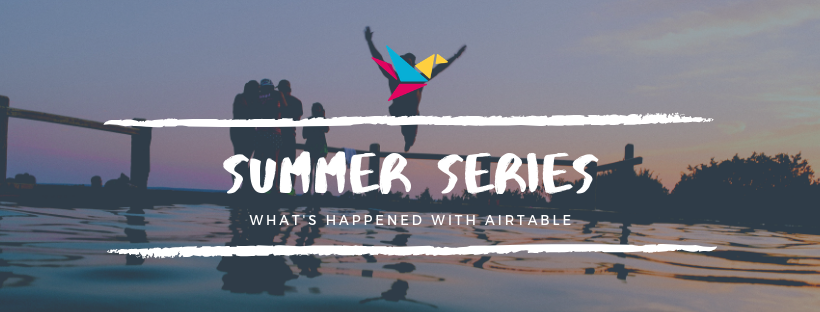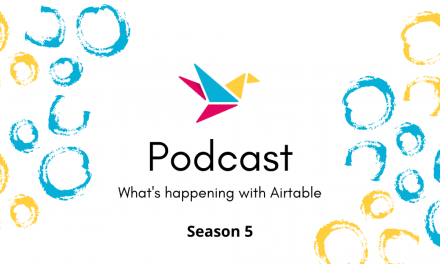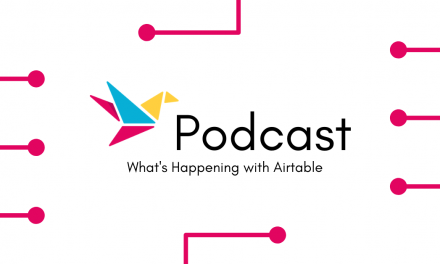Why Airtable is the Perfect Tool for Documenting Emotional Data
Our second episode in the 2019 Summer Series comes from the time Sarah Henry was on the BuiltOnAir Podcast. Sarah is a design researcher and strategist living in New York, USA. Her primary work as a freelancer is with social impact firms that are focusing on using new technologies for social good. Because of her unique position she’s able to pick and choose which tools she uses to get her work done, and Airtable has become a central part of her ideal setup when working with the various companies she helps.
A unique approach Sarah uses when working with her clients (the leaders of these social impact firms) is helping them trust people from different organizations enough to share their data, and then to interact on a high enough level so that they are comfortable with the process. A lot of her work as a designer is getting people on the same page about their technology so that they can make informed decisions about it. She builds frameworks for helping people talk about technology together.
The data needed for design research has to be simple, collected and understandable. When Sarah found Airtable she discovered that it filled all those needs almost perfectly. Now as each new project comes up she uses Airtable as a data capture, organization and delivery point. By serving as a single point of reference her work is greatly enhanced, and the bases she shares also serve as a great value creation as a freelancer. Her “final product presentation” is easy using Airtable.
Sarah talks through how quantitative vs qualitative data plays a part in her work, and how Airtable makes it easy to pull together and analyze both types of data in a single place. She documents real conversations with people during her research sessions using Forms to capture respondents thoughts and feedback in real time.
The base she showcases is called Lean Design Research for Emotional Data, and within it she walks through how it works for capturing relevant social data for the research process. Here are a few of the key aspects of the base:
- A products page – this serves as a starting point to testing new products by allowing the client to list everything they’ll be reviewing
- An internal teams page – for keeping all respondents or teams organized
- Simple questionnaire with a Form view for capturing answers to simple questions. This makes getting answers to simple real time meeting questions easy.
- A table for participants information, including all their metadata and relevant products or research questions associated with the design work being done for the company. In this table automation could be added to make future data gathering easier by pinging the people willing to participate in the future.
- A primary “dashboard” table that serves as the macro view of each research project being conducted and every point of data associated with each one.
Sarah concludes her share by reiterating why design research has played a huge role in developing many new technologies, social changes and creative works. We’ve seen how powerful it can be in causing positive change by bringing people together to make informed decisions, and adding Airtable to the mix makes it even more capable.
Here’s the video of the podcast, including more of Sarah’s story, and the live walkthrough of the base described above.
Episode Video:
Here’s an audio version of the above, with links to download or share if desired:
Episode Audio
Do you know someone who should be featured? Let us know here.
Like this? Consider subscribing on your favorite podcasting app or on Youtube to stay up to date on all things Airtable! Thanks for the love!




![[S09-E08] Full Podcast Summary for 11-02-2021](https://builtonair.com/wp/../uploads/segment_image_1-42-440x264.png)
![[S22-E03] Full Podcast Summary for 04-22-2025 – AI Tools Base; Latest Forms with Dynamic Filters support; Email Send Hack](https://builtonair.com/wp/../uploads/segment-11-440x264.png)
